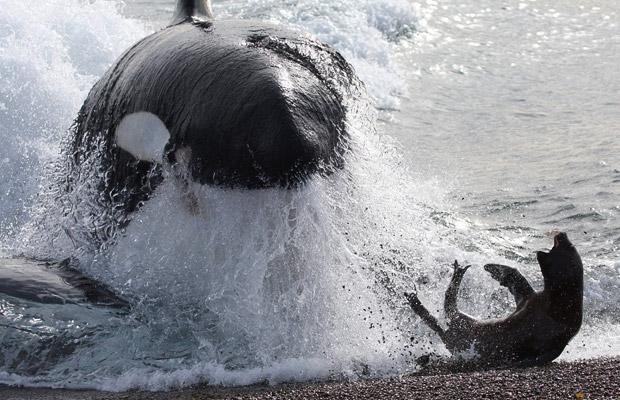How Do Dolphins Sleep?
By Joseph Castro, Live Science Contributor
[dropcap]F[/dropcap]For humans and other land mammals, sleep involves partial or total unconsciousness, the inactivation of all voluntary muscles (those that are consciously controlled) and the suspension of senses such as vision and smell.

Atlantic spotted dolphin (Stenella frontalis) NOAA
But the same thing isn’t true for dolphins and other cetaceans, the group of marine mammals that includes whales, orcas and porpoises.
Instead, these animals undergo an unusual form of sleep called “unihemispheric slow-wave sleep.” Cetaceans: They’re going to keep an eye open for you
When it’s time to rest, a dolphin will shut down only one hemisphere of its brain, and close the opposite eye (the left eye will be closed when the right half of the brain sleeps, and vice versa). During this time, the other half of the brain monitors what’s going on in the environment and controls breathing functions.

Porpoises are among the smallest aquatic mammals.
They are related to dolphins and whales and belong to the same order, Cetacea.
They are very similar looking to the dolphin. However, the way to distinguish them generally is from: their smaller size; they have a rounder body shape and they lack the ‘beak’ of the better-known dolphins.
There are six species of porpoise.
Sometimes, dolphins will hang motionless at the surface of the water during sleep, while other times, they may swim slowly. Scientists have also documented captive dolphins sleeping at the bottom of pools. (They periodically surface for air.)
Within a 24-hour period, each half of the brain gets about 4 hours of slow-wave sleep, according to a 2008 article in the journal Neuroscience & Biobehavioral Reviews, which also notes there’s scant evidence among dolphins for rapid-eye-movement, or REM, sleep (the stage in which dreams typically occur in humans).
There are three main reasons why dolphins may have evolved this sleeping style, the review noted. First, dolphins would likely drown if they didn’t keep half of their brain active, because their breathing is always consciously controlled.
Second, unihemispheric slow-wave sleep allows the animals to look out for danger while they rest.
Third, this type of sleep allows the dolphin to keep up certain physiological processes, such as muscle movement, that helps the warm-blooded mammal maintain the body heat it needs to survive in the frigid ocean.
Read complete story @livescience
NOTE: Featured Image Orca Whale appears to have a leopard seal trapped


